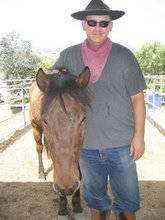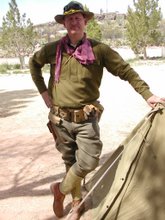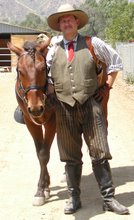Because you asked... :-)

Pictured above is a recreation of a Sassanian Cataphract from roughly the mid-2nd Century AD. The Sassanians were the successors to the Parthians and were located on the Eastern border of the Roman Empire in what is today Jordan/Iraq/Iran and as such were a formidible foe and a constant threat to the Roman position in the East.
The term "Cataphract" in English is derived from the Greek: κατάφρακτος Kataphraktos (plural: κατάφρακτοι Kataphraktoi), literally meaning "armored" or "completely enclosed". Historically the cataphract was a very heavily armored horseman, with both the rider and horse covered from head-to-toe in scale armor, while typically wielding a kontos or lance as their weapon.
In response to the Sassanid threat, the Romans eventually created cataphract units of their own and later also armed them with a short bow to deal with the light horse archers which were typically used in conjunction with the Cataphracts. By using the Cataphracts in conjunction with lightly-armored horse archers, the Sassanids were able to create a fast-moving cavalry force that combined firepower with mobility. The only real weak spots were that the Sassanids lacked any infantry capable of holding fixed positions (at least outside of fortified towns.
One slang term of the period that was used for Cataphracts was the Latin word "clibinari" or metal oven which referred to the effect of the armor in the desert heat...I don't think I up for giving this a try with Max! :-)










No comments:
Post a Comment